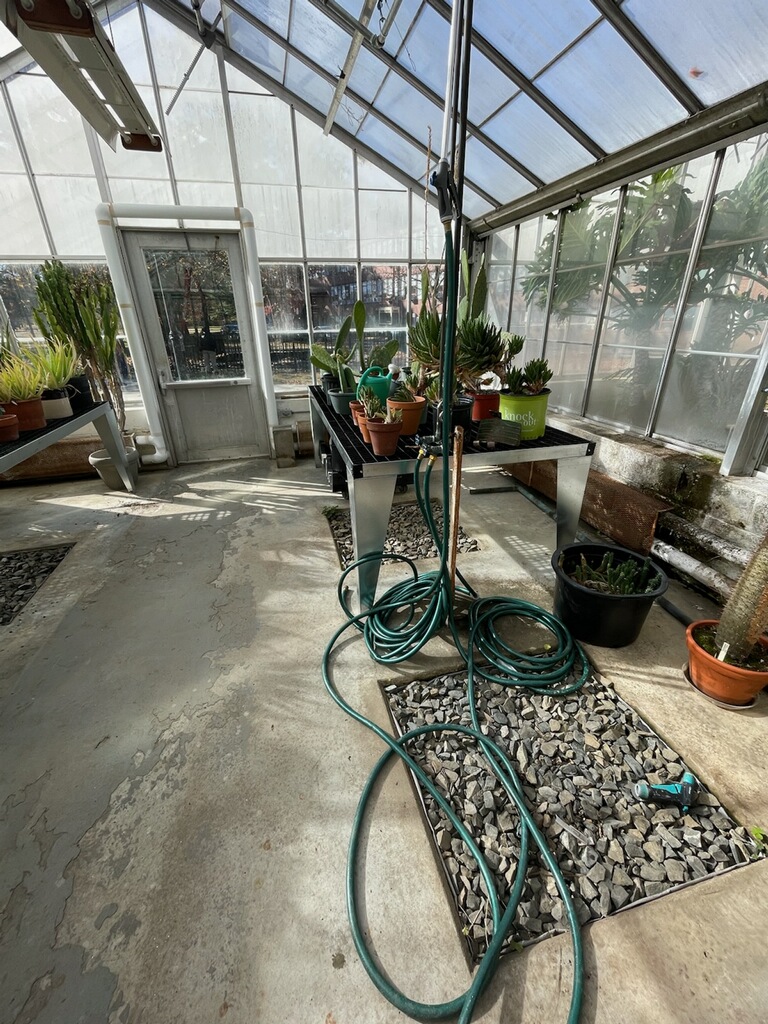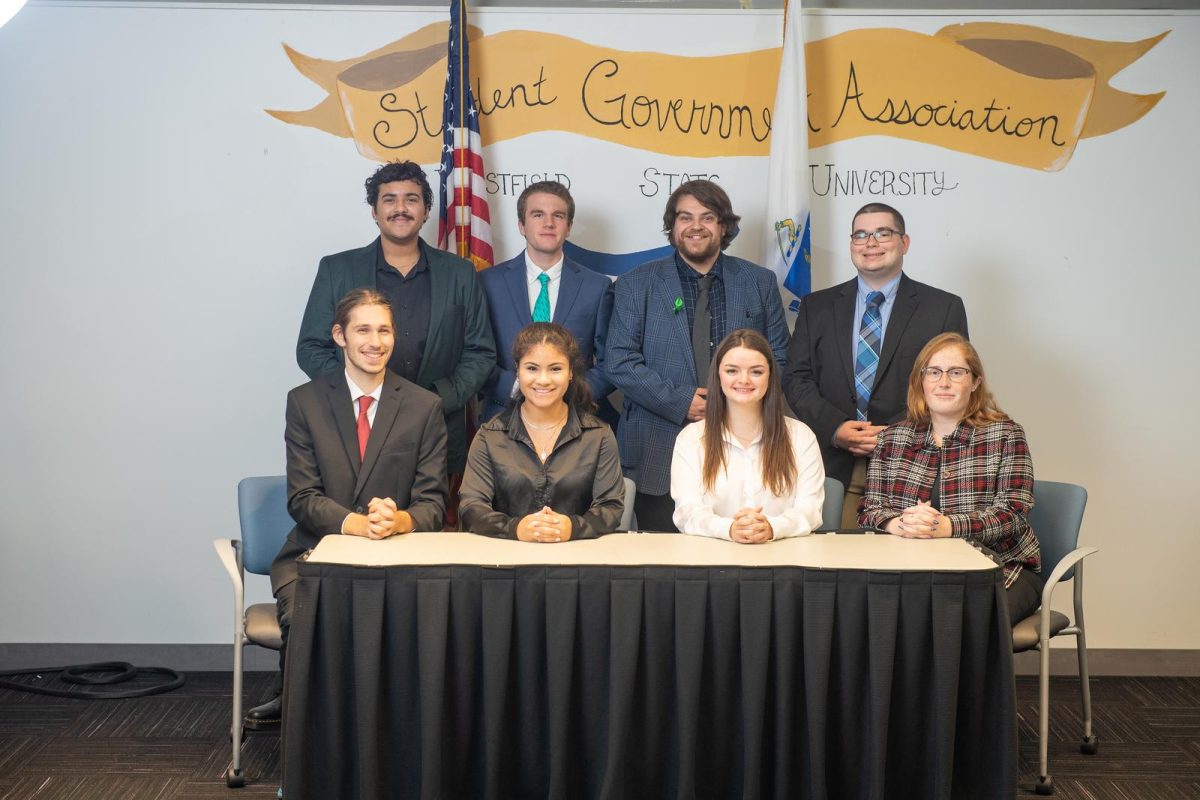Currently making her rounds around the greenhouse, sweeping the dirt off of the concrete floors, Charlotte K. Haley is still hard at work in her position within the federal work study program. Majoring in Environmental Science, the senior is dressed in light clothing for the humid weather setting controlled by the inner workings of the greenhouse. This is all but another day’s work of being here, even if she’s usually the only one working here during her shift.
“The greenhouse is very calming, a great place to study or to be with friends when it’s open,” Haley said.
Although, as she continues to work, a wish does linger in the air as two more people enter the greenhouse and into the section that Charlotte has stationed herself inside of. She’s not the only one with that wish as she continues to work, because one of its newcomers also shares that same sentiment: Sarah Tomas, a professor of both Biology and Environmental Science departments, also wants to get more people engaged and involved within the walls of the greenhouse.
“It’s much more improved than last year,” Tomas said.
Undergoing renovations, the future of the 50-year old greenhouse located on Westfield State University’s campus remains to be unseen. Despite it being a cramped and small building compared to the many other facilities there, it is filled with dedicated members of its little community.
The greenhouse is made up entirely of three sections, each section dedicated to the three purposes of this facility. The first section of the room is entered from within the walls of Wilson Hall and is dedicated to those who enter mainly to observe the plants being grown. Filled to the brim with household plants and flowers, it is the room that contains the least amount of sunlight from the shadows of the nearby building of Bates Hall.
The second room is for the purpose of an educational facility, dedicated to the classes of Biology and Environmental Science. Students frequent this area, especially if it involves the classes related to the greenhouse such as those majors. In this room is where all the cactuses and succulents are stored, so the plants there don’t need as much water compared to anywhere else.
The third and final room is built with the intent of research purposes. This is the room the Biology Department frequents the most. Whether it be for individual or personal research spent there, right now there is a lot of research put into the carnivorous plants currently. The space is kind of barren, but the staff maintaining the greenhouse plan to have more research seeds, pots, work areas, and more plants be placed there soon for classes or for the students personally.
“A lot of the plants are so much older than myself,” Tomas said.
Tomas has been working at WSU for ten years, her 11th year soon approaching. With all the various plants within the greenhouse that she has taken care of before, she has also chosen her favorites. One such plant that she has said to love watching over the most, is the medusa head cactus.
Currently, there are a lot of present and future renovations being done in the greenhouse right now for the winter in preparation for spring. One of the biggest renovations that Tomas has planned for the spring is the temperature controlled vents. Temperature control is a key part of maintaining the plants in the greenhouse, as temperatures can easily get out of control during certain parts of the year. In the summer, the greenhouse can get to 100 degrees C. Alongside upgraded workstations and irrigation systems, it can help cut back on the hours of workers needing to be in the greenhouse daily.
One of other ways to combat the high temperatures in the summer is “whitewashing”, to help keep the greenhouse cool for the plants. This process started over a year and half ago in the spring. Many of these renovations were worked on six months ago.
Tomas has said that renovations are also being done for the year-long pests that are persistent in disrupting the livelihoods of the plants here: mealybugs. The plan is for pest management to get involved to get bugs to eat those pests instead of using pesticide to deal with the problem.
As the fall semester draws closer to the end, the greenhouse staff are “winter-izing” the greenhouse with these changes and more when everybody comes back for the spring semester. More seedlings, plants, tables, and benches have been ordered to be used and placed into the greenhouse.
Staff have even been communicating with other greenhouses to get even more different kinds of plants to be installed that the WSU greenhouse doesn’t have just yet. Even the staff is already planting more things outside of the greenhouse for the spring, especially important habitats for the bugs to reside in during the winter.
It is unknown when the end date of these renovations will be, as this is only the first phase that focuses mainly on temperature control. The staff still has a list of projects to get done, tackling each one step by step. For instance, the windows need to be replaced and systems are needed to deal with weeds.
While Tomas is the one who’s mainly working here as part of her job description, there are still more notable members of the staff that pitch in the efforts of maintaining the greenhouse. Timothy Parshall, a professor of the Environmental Science Department does help out as well, alongside with more student workers pitching in the effort.
As Haley helps Parshall with moving around the potted plants and the equipment in the greenhouse, Haley’s opinion of the greenhouse is a very positive one. She still loves working here and sees it as a great space for anybody at Westfield State.
“I’m not an expert with all the plants here, but I came a long way regardless,” Haley said.

































Jeff • Dec 15, 2023 at 2:36 pm
I love gardening and want to be involved in the greenhouse!